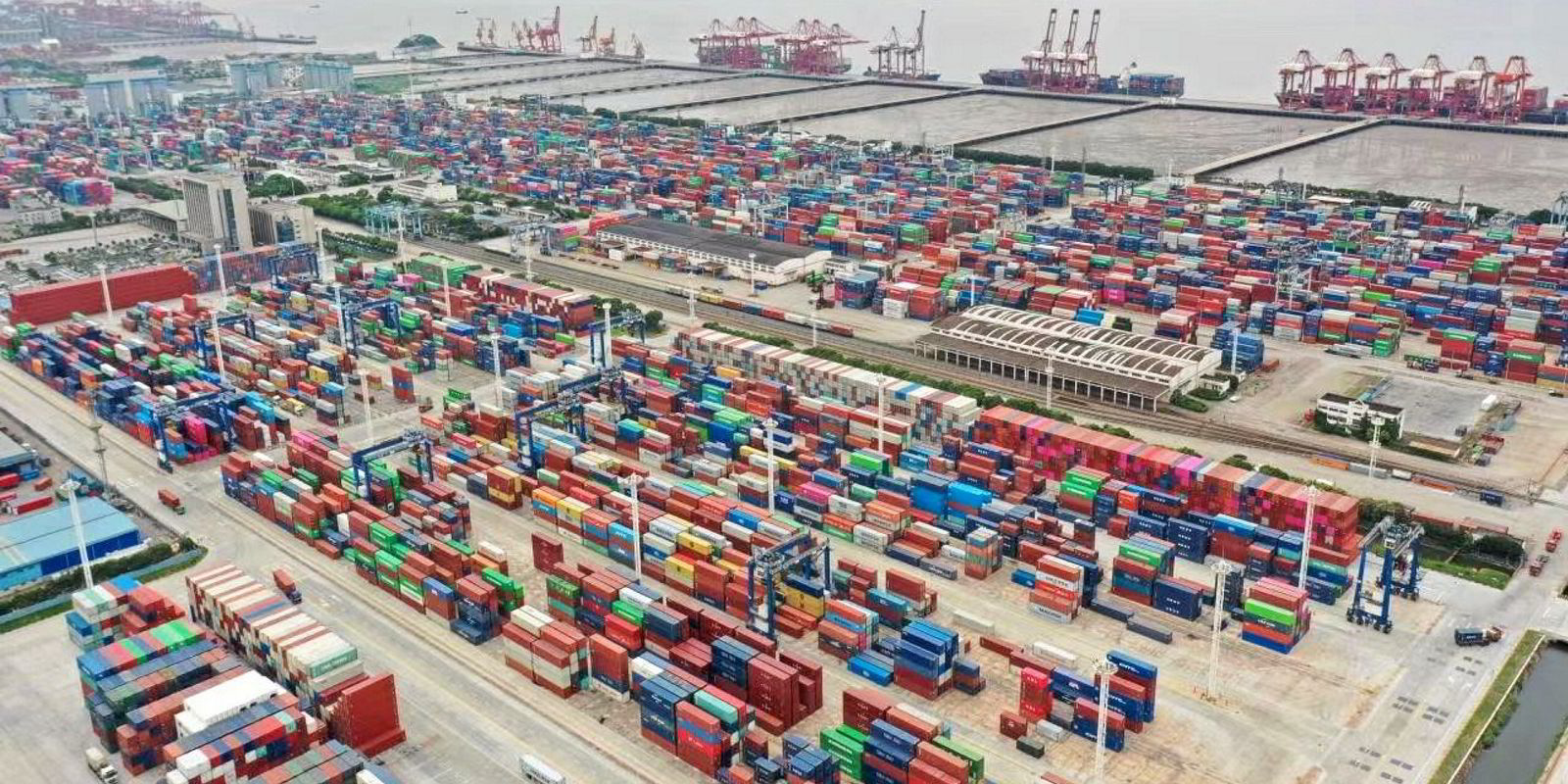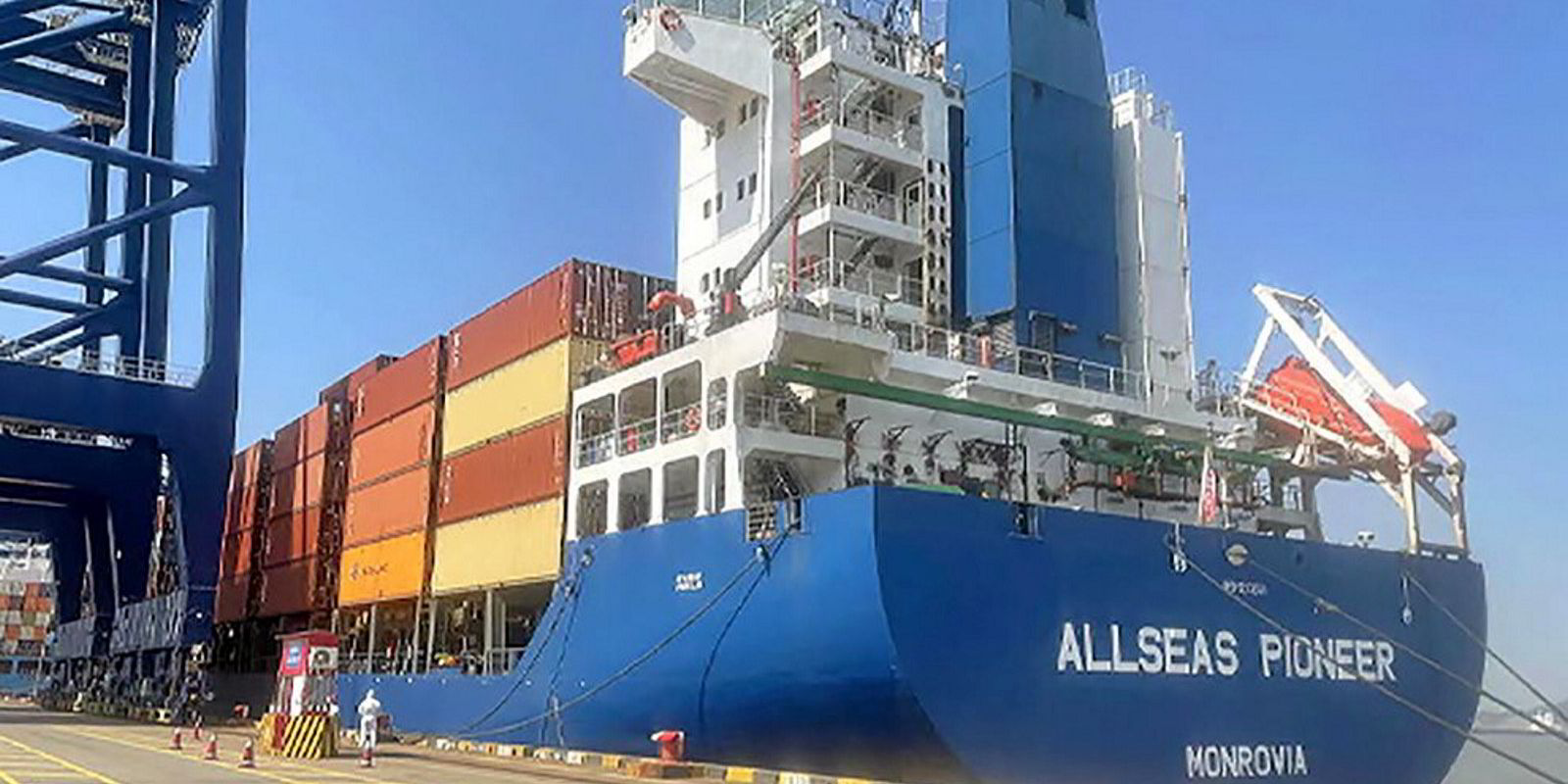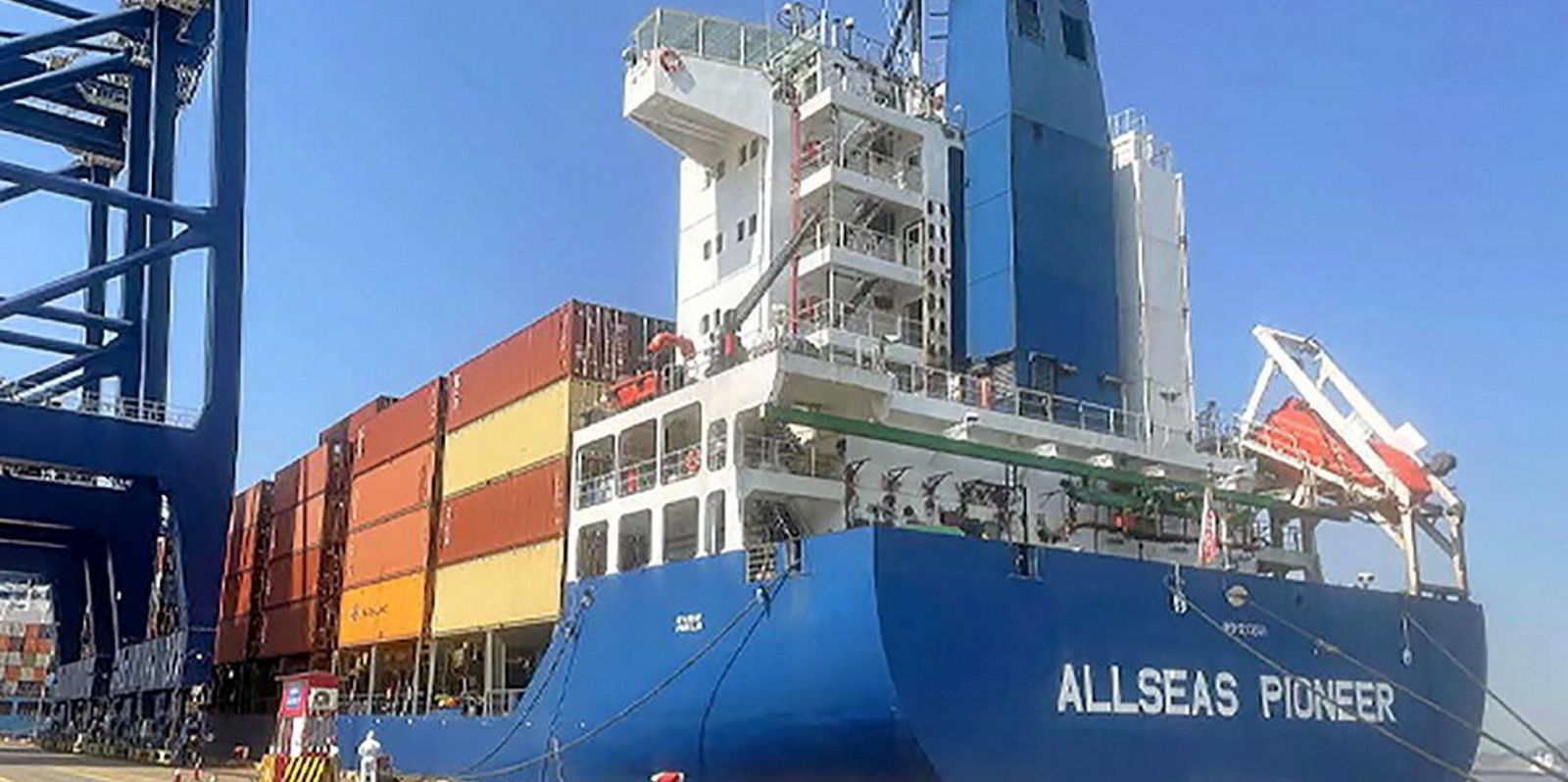Administrators of failed Allseas Global Project Logistics (AGPL) have laid out for creditors the story of high hopes at the peak of a spiking container market, and the fatal commercial and operational shocks that followed.
The subsidiary of the UK’s Allseas Global Logistics is now in liquidation.
But in the summer of 2021, the future seemed bright. Customers were desperate for tonnage and boxes and established freight forwarder Allseas chartered one ship to serve them, then another.
“All parties believed there would be a two-year period of disruption where demand for ocean freight would support a charter service,” wrote Opus Restructuring administrator Steven John Parker in a recital of information from the Allseas directors.
AGPL had been incorporated in 2015 as a vehicle for the group’s special high-risk, high-reward projects, but had been dormant for years by April 2021 when its parent debuted as a container line.
What was to have been a one-off run from Taicang in China to the UK with the 12,325-dwt, 869-teu multipurpose vessel Ronnie (built 2021) came as a matter of urgency “to alleviate supply chain issues for a key customer”.
But similar charters followed the next month, when Allseas took the 12,500-dwt, 838-teu BBC Russia (built 2018) and 17,500-dwt, 958-teu BBC Volga (built 2009).
One-off voyages became a regular service, soon to be supplemented with an Atlantic service, then a branch line through Bangladesh.
Allseas could pull off such deals where others could not because it had ready access to boxes.
And by then, the urgent needs of distressed customers had begun to look like a golden opportunity.

“At this point, the Allseas board realised that there was a significant demand for containerised cargo from China to the UK and that the group had the capability to implement a shipping line. [It] was resolved that Allseas Global Project Logistics Limited would be the legal entity,” wrote the administrators.
In June, Allseas was running the 25,000-dwt BBC Norway (built 2012) plus two heavylift MPPs, the 12,700-dwt Fesco Uliss (built 2004) and 17,000-dwt BBC Danube (built 2012).
A UK freight forwarder that the report does not identify by name approached Allseas about forming a vessel, box and cargo-sharing venture. Allseas’ Ningbo agent convinced it that Chinese ports would be more receptive to pure cellular container ships.
So Allseas chartered the 2,034-teu Aisopos II (built 2016) from Greece’s Capital Ship Management.
At a rate of about $100,000 per day for an 80 to 100-day charter, Allseas would have to earn $4,000 per teu to cover hire plus port and canal fees.
That was fine.
“Ocean freight rates had risen to $8,000 per teu, so the voyage would be lucrative,” wrote the administrators. “The Aisopos II proved to be materially better to operate than the MPP vessels previously chartered.”
Allseas was investing most of its cash flow to build up its business, buying £21m ($26m)-worth of 40-foot container equipment in 2021.

Meanwhile, operational challenges arose, including a typhoon at Ningbo, fraud by an unnamed senior official, further Covid-19-related congestion episodes in East and West, a tiff with its freight forwarder partner leading to a shelving of the cooperation agreement, a March 2022 surge in bunker prices that slashed profit margins, a breakdown of the 31,800-dwt, 1,640-teu heavylift MPP Baltic Harmony (built 2016) and a collapse in the Bangladesh currency, pinching the infant container line’s customers.
The final challenge came in August 2022, after AGPL took a ship from SFL Corp, the 1,740-teu Green Ace (built 2005), for which it could not pay.
“Shortly after, without notice, the Green Ace owners arrested the bunkers on board the [35,100-dwt, 1,878-teu Allseas Pioneer (built 2003)]” wrote the administrator. “Green Ace’s lawyers [were] advised that AGPL [did] not have title to the bunkers, but [was] ignored.”
The SFL action led to the demand for the return of 3,521 containers to lessor Triton. Lawyers advised the company to get all of its ships back to the UK as soon as possible to offload boxes and mitigate claims.
But a second SFL bunkers arrest in Italy of another chartered ship on the way home, Istanbul Denizcilik’s 28,100-dwt, 1,735-teu heavylift MPP Seren (built 2011), stymied that plan.
By October, China to Europe freight rates had crashed to as low as $1,500 per teu. A fuel provider understood to be Dan-Bunkering threatened a winding-up petition. Allseas took its subsidiary into administration.
Allseas Global Logistics responded to a request for comment with an undated prepared statement. Other Allseas group companies “managed to bring all cargo home without any impact and with all cargo released”, the company said, and underscored the legal separateness of failed AGPL from other group entities.
Opus has also been contacted for comment.





